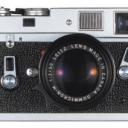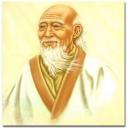Yahoo Answers is shutting down on May 4th, 2021 (Eastern Time) and the Yahoo Answers website is now in read-only mode. There will be no changes to other Yahoo properties or services, or your Yahoo account. You can find more information about the Yahoo Answers shutdown and how to download your data on this help page.
Trending News
What makes Bokeh "better" on FX format cameras?
Hi photographers.
Being an automotive photographer, i've always found shots of cars that were taken wide open or with minimal depth of field very attractive. Bokeh gives a professional feel to photos in which often limited equipment cannot produce.
Being fascinated with other photographer's work, i've found that the shots they are producing is what i want to create.
Through my study of using different lenses on my Nikon D3200, i've found that no matter how hard I try, bokeh isn't quite as... "dramatic" as in full frame cameras.
Thus it will never be. I have done limited research on this. My question is, what mechanically/optically causes the bokeh on a full frame camera to become more dramatic then crop sensor DSLRs?
Thanks
then*
Update:
Some folks on here seem to think that I am asking how to shoot with a narrow depth of field. Did i ask that? Can you not read a question?
I am asking why bokeh or quality of out of focus blur is enhanced and more dramatic on FX format cameras.
If you shoot at f2.8 on a DX vs an FX, the FX camera's shot will be extremely more dramatic as far as bokeh.
If you fail to see this or do not believe me. Send me a message so i can challenge you. People need to do some reading
6 Answers
- Anonymous6 years ago
"Bokeh" - meaning blurred background.
On any camera, but easier on a camera which uses a largish sensor and thus longish lenses, e.g. full-frame or crop frame DSLRs.
Three factors come into play:
1] Use longish focal length, thus ideally 100mm or greater on FX.
2] Use wide-open aperture, thus f1.8, f2.8, f3.5, or whatever lowest number is on your lens (not f8, f11, etc)
3] Keep main subject well forward of the background that you want to blur.
Some lenses give nicer-looking blur than others, so you need to check a few by personal trial if you intend to buy specifically for blur. Note that different people have different ideas of what looks nice in blur.
"Bokeh" is actually a Japanese word. The effect you are looking for, in simple terms, is "shallow depth of field".
- tkquestionLv 76 years ago
The amount of "bokeh" you get are affected by the following:
1) aperture size
2) focal length
3) subject to lens distance
4) size of image (ie. sensor size, film size, etc)
This is very difficult to explain without drawing it out. Let's imagine you have a subject, lens, and the image plane (sensor) of a given size. Let's assume, your subject fills the sensor. Here, you have a certain amount of DOF established. That is, there is a zone that appear to be clearly in focus.
Cropped sensor basically is portion of that image. Draw the size of new sensor on this image plane. Now, you don't have the whole subject So you'll have to use a shorter focal length lens to attain the whole subject in the now smaller sensor. This is what happens with cropped sensor cameras. You'll have to use shorter focal length to take the same image. You already know, wider angle lens will give you deeper DOF.
Therefore, smaller the sensor size, deeper DOF. Use something like an iPhone with tiny sensor and you get almost infinite DOF.
- qrkLv 76 years ago
Boke is the quality of the out of focus regions. Has nothing to do with the body of the camera. It is part of the lens design that controls how the out of focus regions look.
I'm guessing you mean how you get narrow depth of field (selective focus). Yes, a full frame camera is a bit easier to get selective focus. Using a medium format camera is even better. However, with a crop sensor body, you should be able to do pretty good.
You need to use a wide aperture (small f-stop number). Something f/2.8 or wider (like f/1.8).
You need to be aware of subject versus background distance ratios. Shooting along the length of the car will make the distance ratio favorable.
- B KLv 76 years ago
It's not an effect. And it's not called "bokeh".
It's called shallow depth of field.
You need to read this: understanding depth of field: http://www.cambridgeincolour.com/tutorials/depth-o...
- BerndLv 76 years ago
Camera vs camera = the larger the sensor the more shallow the depth of field. It is part of optics and physics.







